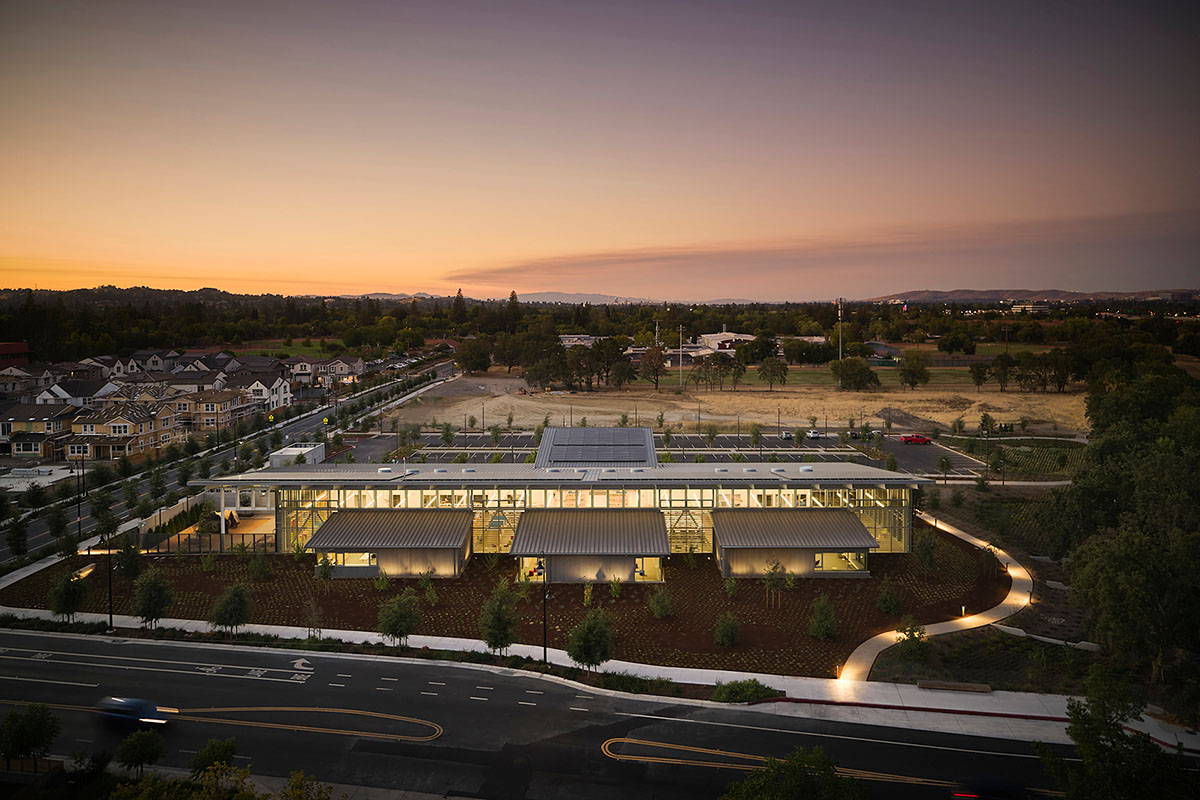
Engaged by Pleasant Hill to create its first civic building in many years, we were asked to design a 21st century library, where all ages would feel welcome and encouraged to learn, create, and explore. The City wanted an inclusive community destination and a “signature building” with a timeless, flexible design. The library was conceived alongside three adjacent projects partially located within the Grayson Creek 100-year floodplain, including roadwork improvements, a new multifamily housing development, and future sports fields. Together, the project team mitigated flood concerns, while knitting sites together with bike and pedestrian pathways.
Pleasant Hill Library is an exemplary response to numerous Framework measures, including Equitable Communities, Wellbeing, Ecosystem, Economy, and Change. The project’s all-electric, highly energy-efficient design is targeting net zero energy, and includes radiant heating and cooling, natural ventilation with night-flush operability, and a rooftop PV solar array. Its free span central hall provides ample capacity for diverse offerings and allows easy reconfiguration of stacks should programmatic needs evolve. Movable furniture subtly delineates zones tailored to youth, teens, and adults, while bringing pops of color to the interior. A clerestory and large skylights allow natural light to flood the interior. Pavilions off the main hall house a ‘messy makerspace’, ‘story lab’, and a quiet reading ‘retreat.’
Since opening, Pleasant Hill Library has become a vibrant community hub, with nearly 30% more checkouts than the next county branch in its first full year of operation. The library has also hosted nearly 51,000 participants across 548 events.
This project got a lot for a little. A beautiful children’s library. The way the building brings daylight in and modulates with these special rooms makes it an exceptional space. There is also a strong sustainability program and landscape design—really strong.